How to grow Cosmos
For an airy, romantic, and natural feel in the garden, there are few plants which surpass the undemanding Cosmos!
Cosmos are available in many varieties of annual or perennial types with single and double flowers. Classic white Cosmos bipinnatus Purity is the most elegant pure-white single flowered variety. It is loved by bees and beautiful when freshly picked in abundance for a large vase. Tropical orange Cosmos sulphureus Tango is a shorter growing variety which looks great growing in a large vintage trough or pot in a bright spot where it will glow in the sunshine.
Cosmos are classed as either half-hardy annuals, or perennial plants depending on variety and location. They are fabulous for popping into gaps in the garden borders to fill out spaces effortlessly. The ferny foliage is delicate, frothy and attractive. The daisy-like flowers will last up to a week in the vase if picked as they are about to open.
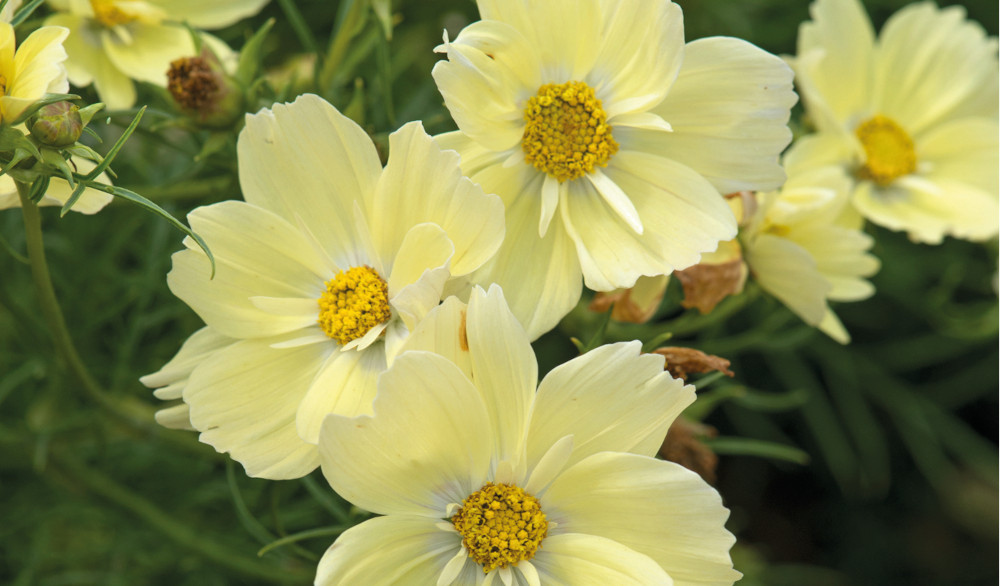
Key Information
Soil pH
Position
Hardiness

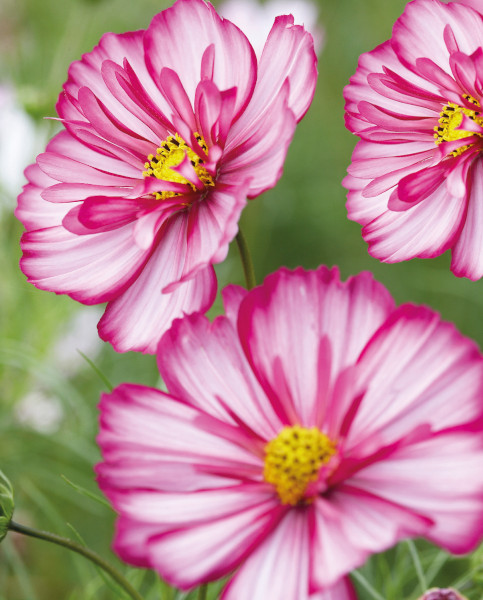
Where & when to plant Cosmos
Cosmos should be planted out after all danger of frost has passed; this is usually the first week of June for most parts of the UK. If you are purchasing young plants before then, you will need to keep them undercover and harden them off in a cold frame for a week or two before planting out.
The beauty of planting out young plants is that you will create an almost instant cottage garden feel as the plants grow very rapidly in early summer. Once your Cosmos begin blooming in June and July, you will have an endless stream of flowers until the end of autumn.
Most varieties of Cosmos grow up to around 90cm tall with a spread of 60cm, so plant taller varieties towards the back of the border, and less common, shorter varieties near the front or in a pot.
Cosmos are unfussy on soil type but like to grow in well drained ground. In fact, they thrive in poor soil so adding feed or rich compost is not needed at the time of planting.
How to plant Cosmos
Pick a sunny site for your Cosmos to grow and dig a hole slightly deeper than the pot which your plants arrived in. Place your plant into the hole and gently firm in before watering well.
Pinch out the tips of young plants, leaving two or three sets of leaves for bushier plants.
Slugs can be a problem for young cosmos plants so keep them under control with natural methods such as by placing a layer of grit or crushed eggshells around the base of your freshly planted Cosmos. Beer traps can be effective at trapping hungry slugs at night-time. Avoid using slug pellets which are harmful to our eco-system and your garden wildlife.
Cosmos can also be grown in pots of peat-free compost or soil and will require regular watering through the summer to ensure they do not dry out in order to get the best from you containers.
Once planted, water thoroughly and deeply to settle your bulbs in place and to encourage a healthy root development system.

What to plant with Cosmos
Cosmos are invaluable for providing a light and pretty mid to upper storey in the border. They are great at filling out any gaps which become apparent as your spring flowers fade and add a naturalistic, meadow-like feel to the garden.
Shorter varieties work well underplanted with roses – the combination looks effortlessly elegant, particularly in a fresh white and green planting scheme.
Please contact our lovely Customer Care Team at Hayloft if you would like any help or planting ideas for your Cosmos. Below are some suggestions for some complimentary companions for these fabulous plants.
Rudbeckia, Antirrhinum, Hollyhocks, Nepeta, Calendula, Fennel, Dill, Sweet peas, Grasses, Roses, Echinacea, Veronica, Salvia, Astrantia, Ammi majus, Zinnia
Wherever, and however, you choose to include Cosmos in your garden they will give and natural and effortless effect to your carefully chosen planting.
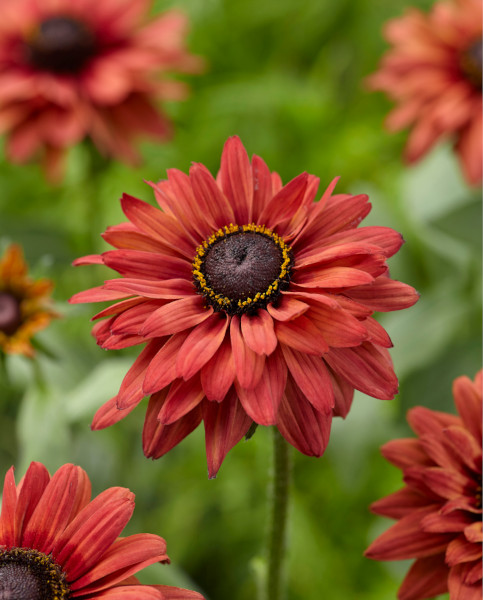
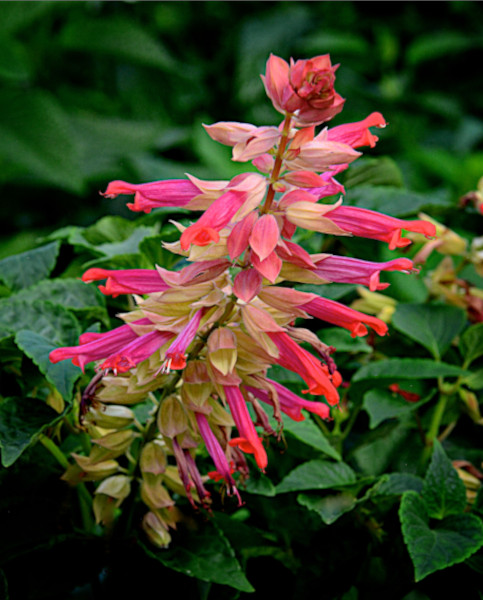
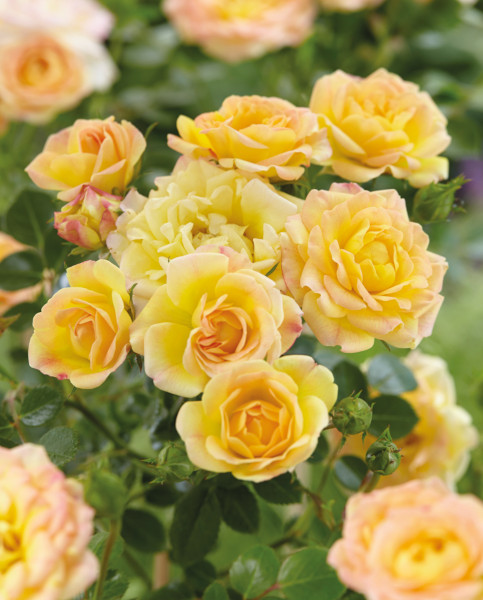
How to care for Cosmos
Cosmos are prolific bloomers which require little maintenance. You can expect to pick bunches of cheerful flower stems and delicate foliage for months on end. Regularly deadhead by snipping off the faded flowers for the best show.
Taller varieties of Cosmos will need some support from heavy rainfall and wind. If you are growing a large number of plants - in a cutting garden for instance, then you may wish to support your plants with pea, or jute netting stretched over wooden stakes at the edges of your beds. For a more natural look use spindly branches from trees such as birch. If you have fewer plants then a sturdy cane pushed into the ground near to your plant is a good idea - you can tie the main stem to this every week or two as it grows.
Metal supports which surround the foliage, or the type which a plant can grow up through are also a good option to support your Cosmos plants.
Cosmos do not require any feeding throughout the growing season and will only need watering whilst they are establishing themselves and during dry periods. Feeding plants will result in masses of foliage and few flowers so is not beneficial.
Cosmos atrosanguineus, known as chocolate cosmos, is a slightly different perennial variety with a delicious chocolate-vanilla scent which grows from an underground tuber rather than from seed. They should be treated in a similar way to dahlias over winter, by digging up and storing or mulching with a thick layer of compost because they are tender and may not survive a cold wet UK winter.
How to propagate Cosmos
Annual Cosmos are extremely easy to grow from seed. Allow some flower heads to fade and dry out on the plant and collect the seeds on a dry autumn day. Store them in a labelled envelope in a cool dry place until spring.
In March or April, sow the seeds in trays of seed compost, covering them over with a thin layer of compost. Water well and place in a warm sunny spot, ideally in a greenhouse or on a bright windowsill.
The seeds are fairly large to handle and germinate quickly, making them great plants to grow with children. Cosmos seedlings also grow rapidly and can be grown from seed to bouquet in as little as 12 weeks.
Prick the seedlings out and pot on into individual pots when they have two sets of true leaves. Grow on in the same conditions until mid-May when you can start hardening young plants off outdoors ready for planting in their final location. Be sure to bring the pots back indoors at night, especially if late frosts are forecast.
Seeds can also be sown directly in the ground in late May but are more prone to slug attacks if grown this way so a little extra care and attention in the early stages will give you a more reliable return for your efforts.




